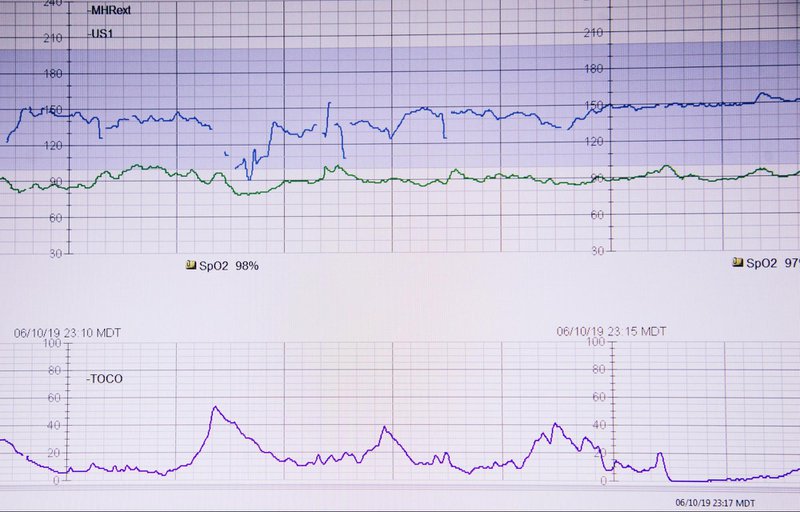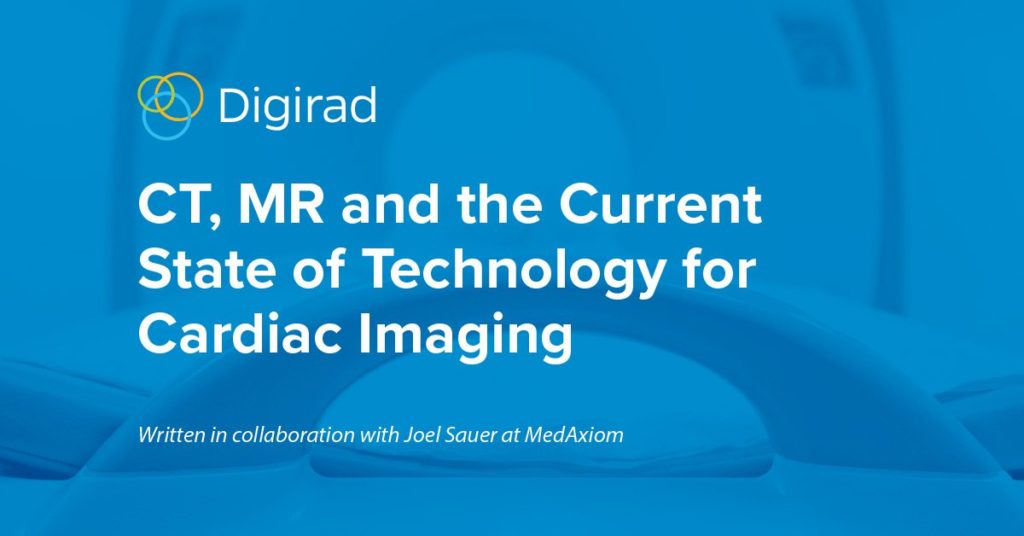Technology and the modalities that drive diagnostic cardiology continue to see innovation and development. New technologies and advancements in cardiac imaging will have a direct effect on both cardiologists and patients as they move mainstream. In this post, we’ll look at what is happening with cardiac imaging technology:
CT technology for Cardiac Imaging
One of the significant developments with CT Technology is CT with FRR. Fractional Flow Reserve (FRR) is traditionally an invasive, guide wire-based procedure allowing clinicians to accurately measure blood pressure and flow through a specific part of the artery. With CT, it is non-invasive.
A potential advantage of using FRR is that when combined with the CT, the images are powerful enough to identify whether a vessel needs medical intervention. Joel Sauer, Executive Vice President of Consulting at MedAxiom, has spoken with cardiologists who describe this technology as a “game-changer.”
Up until now, a decision to stent or not was generally based on the vessel being blocked above a certain percentage, however, this did not guarantee the procedure was the best course of action. For example, perhaps a vessel is clogged but isn’t the source of the issue for the patient, or a vessel might have build-up but is not worth stenting because muscle around it is already dead. FRR with CT can identify these situations and allow for a more effective treatment plan.
Recent conference sessions on CT-FRR have discussed how the technology might now be mature enough to routinely use with patients. The Centers for Medicare and Medicaid Services (CMS) as well as private insurers have been approving reimbursements, driven by clinical evidence showing the technology can reduce the need for diagnostic angiograms or allow early discharge of patients who present in the emergency department (ED) where FFR-CT can definitively rule out severe ischemic heart disease.
The technology is not only useful for interventional planning, but for detecting and tracking disease early. This can mean that patients have the opportunity to reverse plaque formation and avoid surgery. The challenge will then be to keep them compliant for the years to come, another area in which CT has a role to play. Physicians can track patient condition using CT and use it to show where improvements have been made as a result of lifestyle changes, or where improvements could be made.
Challenges with Cardiac CT
Consequently, the technology has been slow to be adopted by medical practices. Part of this may be that the datasets have to be sent to a single provider, HeartFlow, via the internet. This is because they host the super-computing power required to run the powerful algorithms behind FFR-CT technology.
Another potentially limiting issue is that the scans are often read in the radiology department rather than a cardiologist. This requires extra training for radiologists for whom heart imaging may be a new field of study.
One thing that might spur further adoption is that use of FFR-CT can reduce the need for further testing. For example, where a patient has undergone stress testing and still has chest pain, a diagnostic cath would usually be ordered. FFR-CT can reduce the need for a cath where it won’t make any difference for the patient if it is used as the next step.

MRI technology for Cardiac Imaging
An MRI cardiac stress test is showing promising results, both for determining heart function and for predicting which cases are potentially fatal.
Cardiac magnetic resonance (CMR) has potential as a non-invasive alternative to tests such as catheterizations or nuclear imaging. In a study appearing in JAMA Cardiology, senior author Robert Judd, Ph.D., co-director of the Duke Cardiovascular Magnetic Resonance Center says:
“We’ve known for some time that CMR is effective at diagnosing coronary artery disease, but it’s still not commonly used and represents less than one percent of stress tests used in this country.
One of the impediments to broader use has been a lack of data on its predictive value — something competing technologies have,” Judd said. “Our study provides some clarity, although direct comparisons between CMR and other technologies would be definitive.”
Some barriers to further adoption of stress CMR include the availability of good-quality laboratories, a lack of data on outcomes and the necessity to exclude patients who cannot undergo magnetization. There’s also a similar issue to CT in that not everyone who can read nuclear imaging can read a CMR.
It is likely that many technologists will need special training to be able to produce the quality images that are needed. The study mentioned here provides a good starting point for head to head studies with other modalities, particularly to determine whether it is worth hospitals investing more in technology and training.
Cardiac SPECT and PET
A clear advantage of nuclear SPECT is the availability of imagers and the overall cost of the procedure. When you compare SPECT to CT, it is more cost-effective and takes a lot less time. The fastest CT procedures (on top-of-the-line machines) generally take 45 minutes, whereas SPECT takes 30 minutes or less. Gamma technology has reduced imaging times for SPECT from 15-20 minutes to 2-4 minutes.
SPECT is utilized significantly more often than PET, particularly due to the high cost of the generator-based PET MPI agent and PET imaging systems..
There are a few noteworthy trends with SPECT and PET. In particular, there has been a marked decrease in numbers since the mid-2000s, despite most risk factors for cardiac events still being present. Secondly, there has been a decrease in abnormal test results over time.
There are a myriad of reasons indicated for these trends, such as the emergence of Appropriate Use Criteria in 2005 and more patients who can tolerate exercise undergoing stress testing without nuclear imaging as a first option.
In other developments, nonperfusion cardiac imaging is gaining ground. Here is an extract from a Journal of Nuclear Cardiology article, written by George A. Bellar:
The acceptance and growth of nonperfusion cardiac imaging applications are vital in widening the offerings of nuclear cardiology going forward. Already, much activity has been ongoing in validating the worth of F-18-flurodeoxyglucose (FDG) imaging for detecting and quantitating focal inflammatory lesions in patients with sarcoidosis.13,14
From 8 published studies, the pooled sensitivity and specificity values for detecting cardiac involvement with sarcoid were 89% and 78%, respectively. Combining MPI with FDG imaging could even enhance the accuracy of detection of sarcoid granulomas in the heart. Even combining PET with MRI for showing areas of delayed hyperenhancement in areas of decreased perfusion without inflammation could be an early manifestation of cardiac sarcoid.

Final thoughts
Bottom line – we’re seeing vast advances in the quality of imaging from all technologies and with that, the ability to accurately diagnose. However, each technology has strengths and weaknesses.
There’s the amount of time taken and, therefore, limitations placed on patient throughput. Then there are the relative costs and whether approval can be gained from CMS or insurance companies. In some cases pre-authorization is required.
Most of the time, it comes down to training and availability. Some of the more recent cardiac imaging technologies are not yet widely available or require additional training of technologists. Overall, it will be helpful to see more direct comparisons between the different modalities and their diagnostic qualities.
This post was written in collaboration with Joel Sauer, Executive Vice President of Consulting at MedAxiom.




